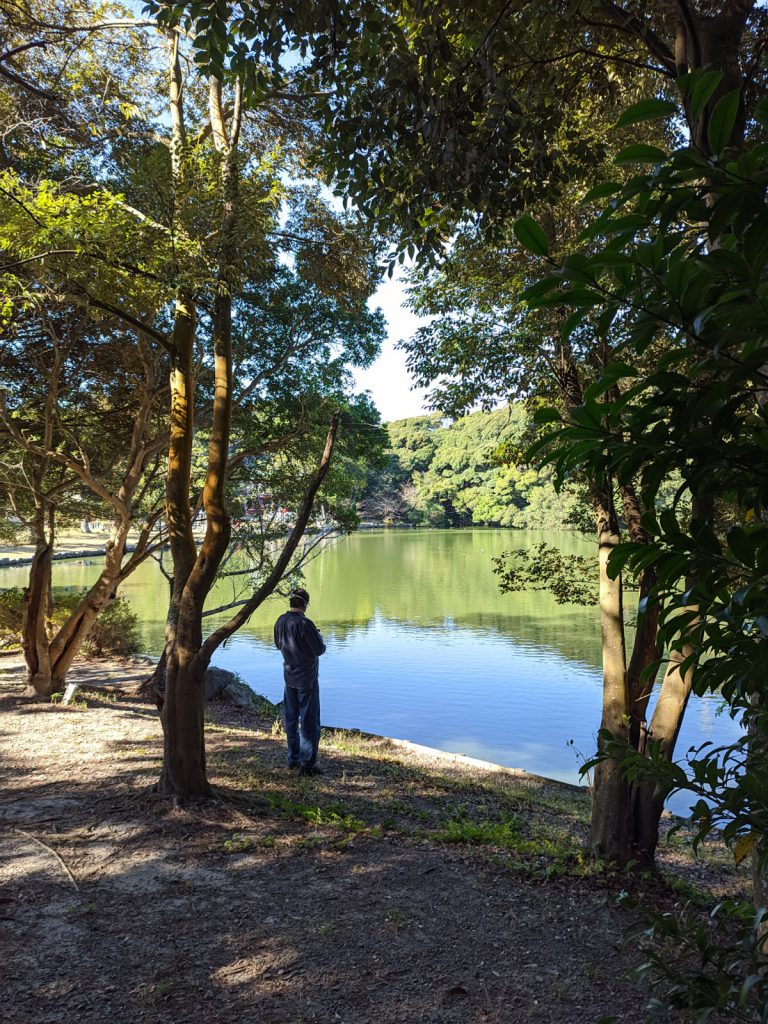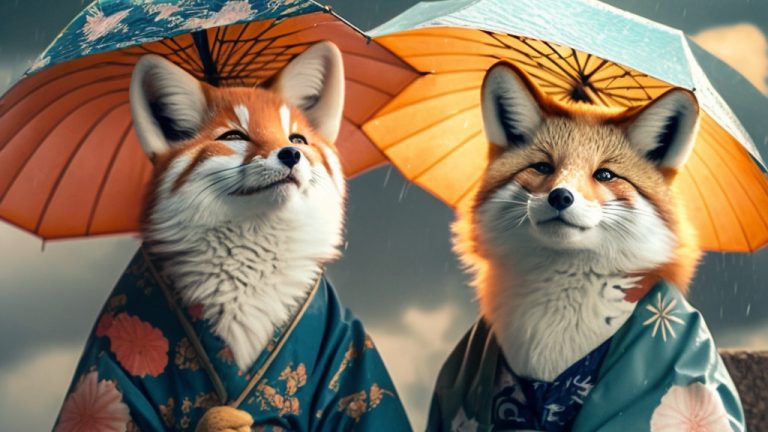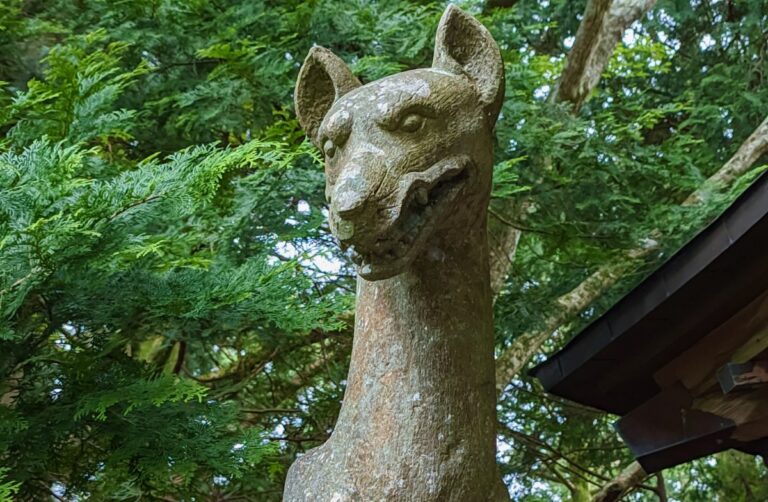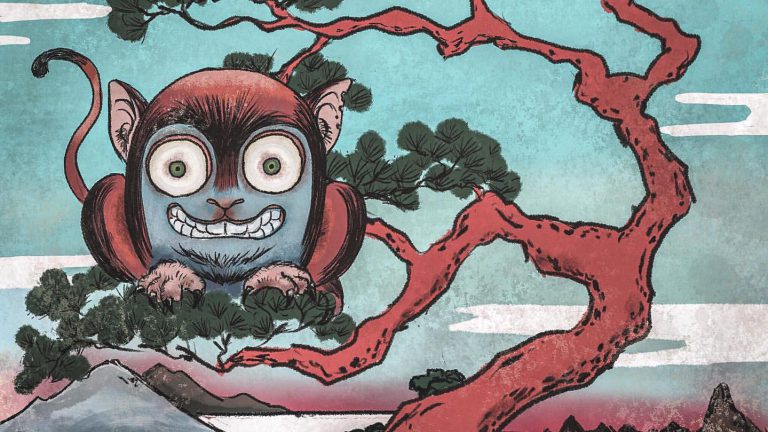This is Thersa Matsuura and you’re listening to Uncanny Japan.
It’s been almost a year since I’ve done a show about one of the seven mysteries of Shizuoka. Enshu no nanafushigi. A recap: There was The Rock that Cries at Night (ep. 36), Rocks that give Birth to Other Rocks – Koumare Ishi (ep. 59), The Tortured-Snake Dragon at Sakuragaike (ep. 88 and 89), The Cat Grave and the Rat Grave (ep. 99), and The Legend of Shippeitaro (ep. 119)
If you counted, that makes five and today’s will be six, and you would be right to think, well, that means there’s only one more since Nana Fushigi means Seven Mysteries. But you’d be wrong! Sorry. That wasn’t nice. But it’s one of those things where there are supposed to be seven, but it turns out there are a lot more. So that means much more nanfushigi goodness still coming your way in the future. For today, though, I’ll be talking about the Nami kozō or Wave Boy.
Intro
Preordering The Book of Japanese Folklore
Hey hey, how are you? Awesome, I hope. I’m fine. Busy recording the audio version of The Book of Japanese Folklore. Which is coming out in most likely late April. The reason for the ‘most likely’ is that the art department decided they wanted to add stained edges to the pages of the hardcover, to make it even prettier! So far it’s still on track though for the April 30th release.
Hey! If you haven’t or are thinking about it, you can preorder it, and then email me at thebookofJapanesefolklore(at)gmail.com with a screenshot and I’ll send you an hour-long folktale I translated, reimagined a little, and read called “The Wife Who Didn’t Eat”.
If you’re a patron or thinking about becoming one, I’m working on making a bookplate and bookmark that I’ll send to you on top of the story. I need to go to an art store and check out the washi paper. I have ideas for how they’re going to look.
Thank you everyone who has already preordered and those who have already reached out by emailing (all spelled out) thebookofJapanesefolklore (at) gmail.com I really love hearing from you, where you’re at, and how you found the show. Like I wake up excited to check my mail. That’s huge. Thank you.
Nami-Kozō/The Wave Boy Who is He?
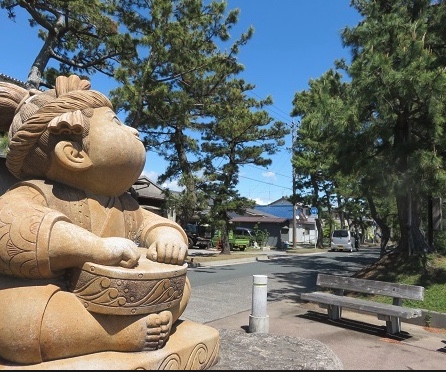
Okay, on to today’s show. Listen to those waves. This area where we’re recording right now was in 1996 selected as one of the 100 soundscapes of Japan by the Environment Agency. Perhaps for a reason. Let’s listen to these chill ocean waves while I tell you about the Nami-Kozō, or wave boy.
The Nami-Kozō is a Yokai or sometimes even thought of as a low level kami or god from Shizuoka, my prefecture. I didn’t even know about him until very recently. One thing I discovered was that there are quite a few different stories about him. First, he not only goes by Nami-Kozō, he also is sometimes called Umi Nari, “the sound, ringing, or crying of the sea.”
Uminari or The Crying or Ringing of the Sea
First, let me tell what umi nari means when it’s not another name for Nami-Kozō. It’s a sound reportedly heard by residents living near the shore of Hamamatsu. Usually when you think of the sound of the ocean it’s the sound of waves lapping up against the shore. But this is different, it comes from far out in the sea and has a low frequency, like a rumbling or drumming.
In English it’s translated as sky quake. Something else I had no idea existed until just now. Sky quakes have been reported from all over the world for hundreds and hundreds of years. They’re also said to sound like cannons or the reverberating of artillery fire or like distant but loud thunder. The catch is, there are no clouds in the sky. These sky quakes go by a bunch of different names, too. Like the “guns of Seneca”, “water guns”, “fog guns”, and “mistpouffers” Apologies about that pronunciation, but I love the name.
Basically, no one really knows exactly what causes these deep-throated grumblings of the sea. Some theories are volcanic eruptions echoing across the ocean, underwater caves collapsing, gas that was trapped under the earth’s crust being released and making its flatulent way to the surface, and meteors entering the atmosphere. You might be tempted to just say they are sonic booms from some far off jet, but these ocean cries have been talked about for a whole lot longer than our venture into the skies.
So that’s what Umi nari means. It is a mysterious thing in and of itself and maybe the Nami-Kozō came into being as a way to make sense out of this strange phenomenon. When it happens it’s said to be heard as far as 20 to 30 kilometers inland. So loud. It reaches its peak from the rainy season (around June or July) to the obon season, in August. They say.
Simple Wave Boy Tale
The simplest folktale goes something like this: Mukashi Mukashi, a fisherman caught the wave boy in his net. The little Yokai pleaded for his life. Please, release me and I will predict the weather for you. If you hear a mysterious rumbling sound coming from the southeast direction of the sea that means rain is coming. If the sound comes from the southwest, though, the weather will be fine.
Nice, but a little lacking on details.
Different Wave Boy Tale
Here’s another variation of the story. One very hot day a young boy was out tending his family’s fields. It was so hot and so dry that all the vegetables had withered and burnt. Still the boy tried to save as many as he could to take home to his parents. He gathered what he could and was just about to return home when he heard a small frail voice calling out. He searched around until he found a very tiny little human-like creature. Please help, said the little fellow. My name is Nami-Kozō and I live in the sea. I was washed in with the last big storm that blew through and have been stranded here ever since. Every day is hotter and hotter, drier and drier and I fear I will die here. Could you please carry me back to the ocean.
The boy felt sorry for the weird little dude and said of course he’d take him back. Which he did, carefully placing him in the water. Thank you thank you! Cried the little guy and vanished under the waves.
Meanwhile the days passed with no end in sight to the drought. With no more vegetables left to pick, the boy went to the ocean and sat watching the waves. Suddenly he saw the shadow of the little wave boy he’d saved several days earlier. Nami-Kozō swam over and thanked him again for his kind heartedness. But he noticed the boy didn’t look very happy. When he heard about the predicament the whole area was in, he said now that he was back in his element, that he was a master at causing rain.
He’d go back into the sea and send rain this way. Then, he said, in repayment for saving his life, he’d drum to forecast the weather. Drumming that came from the southeast meant rain and drumming that came from the southwest meant calm weather.
Waraningyo or Straw Dolls
There’s an even more interesting version about the Nami-Kozō, but I need to mention wara ningyo or straw dolls. You’ll probably remember the morbid voodoo doll-ish variety from the ushi no Koku mairi (ep. 52), where they were used to curse a person. Well, actually they were also used for good luck, too. For example, during the Heian Era, straw dolls of various sizes were used to ward off evil. Like putting them outside your village to lure any disease like the measles or smallpox sweeping through the area into the human-shaped effigy, sparing the villagers. After the danger had passed these wara ningyo were cast into the river along with some prayers, taking all the bad energy and disease with them. Lots of impure things were floated down rivers back in the day. But for now just keep in mind this custom of tossing these bundles of straw into currents and them being carried away.
More Interesting Version of Nami-Kozō’s Story
So the next, little more interesting and detailed version of the wave boy’s story goes like this:
There once was a Buddhist monk named Gyoki. He was a real person, actually, and did a lot of neat stuff, not the least of which was mapping out Japan and where all the temples and shrines were, and helping to build the daibutsu, big buddha, in Nara at Todaiji.
Well, one day Gyoki made two straw dolls, praying for the swift recovery of his ailing mother, and he sent them out in the fields to plant rice. I’m assuming here because that’s what his mother was supposed to be doing and couldn’t because she was sick. After the two Wara ningyo finished their work, Gyoki had them sit down and recited a bunch of sutra (Buddhist prayers) over them. He then took them to the Kurumegi River and instructed them to warn people if any bad weather was approaching. Then he sent them off.
One of the straw dolls made it down the river and into the sea but soon got caught up in some fishermen’s net. The fishermen were frightened not knowing what the affront to nature was. I imagine the straw figure – big enough to farm – squirming around among a bunch of fish. They decided they had to kill it. But then it began talking.
It told them that it lived on the bottom of the ocean – which was a lie if you think about it, a good one though. If they released it back into the sea, it promised to forever foretell the weather by drumming loudly enough they could hear from the surface. The fishermen believed the bizarre straw beast and let it go where it disappeared forever under the waves.
But it kept its promise. Ever since that day it has done just that, evidently.
The fisherfolk figure out that if they heard the percussive thumping from the southeast direction there would be smooth sailing. If, however it came from the southwest, a storm’s approachin’.
Similar Straw Doll Tales
There are a couple of similar tales involving waraningyo, straw dolls of the good variety.
One came from the time of Kukai (remember we talked about him in the episode about the five elements?) He brought esoteric Buddhism, Shingon, to Japan. Well, that’s not all Kukai did or could do. While he was practicing on a mountain once, he and presumably those with him were bothered by a bunch of wild boars wreaking havoc on everything. To defeat these animals he created some straw dolls. After the dolls had finished the task of getting rid of the inoshishi (I think that’s another story I’d like to read), Kukai instructed they further help humans by letting them know ahead of time if the wind and rain were going to kick up. These dolls were taken to Enshu (now Hamamatsu) where the folktale started.
The second tale involves the construction of the Akiha Shrine, way up in the mountains, again in Hamamatsu. It was hard work, so once again straw dolls were employed to help out. The little guys worked hard and once finished were rewarded by being set free. Down a river. Only the people were a little reluctant to let them go, maybe they could help out some more in some other way? So they asked the wara ningyo to please notify them of any inclement weather which would help with the timing of planting and harvesting crops. I’m assuming they agreed to this.
Straw Dolls are Kappa?
Now here comes a twist that kind of blew my mind. You remember kappa right? Those slimy, aquatic river beasties, with a shell on their back, beak on their nose, and a little indentation on their heads that holds strength giving water? Well, if you read really far back about them and where they came from, there’s a line of thought that says they were actually believed to have transformed from these types of straw dolls used for labor. They waraningyo metamorphosed into a very early and crude kappa.
But this makes sense to me because the very first book in Japanese I got about Yokai had a section on kappa that I painstakingly translated. But I was confused at the part that said kappa were a kind of doll and that if you pulled one arm the other would get shorter. Like they were connected. It made no sense to me. I thought I was reading it wrong. Here, thirty years later, maybe I wasn’t ! If you look at a waraningyo, the two arms are just one bundle of tied straw stuck through the body. If you were to pull one arm the other would shorten. Mystery solved!
Proof of this theory come from Mizuki Shigeru, of GeGeGe no Kitaro fame. He has his own Nami-Kozō and describes him as a kappa and quite nearly a god.
There’s also a river in Shizuoka called the Tenryu River and it’s really twisty and turny and snakes all through the mountains. I fell in love with this river when I stayed at the mountain inn last year and watched the early morning mist rise off it changing by the second. It was mesmerizing and magical and I just sat there with my coffee thinking, of course, people believed in dragons, this is unreal! The river’s name means Heavenly Dragon, by the way.
Anyway, there are a lot of folktales and legends all up and down the Tenryu and a folklorist named Tokuro Chiba wrote about how a good many of them are about Kappa that helped out doing agricultural work. The idea of kappa helping out, but also straw dolls helping out overlaps here.
So there you go! The Nami-Kozō Wave Boy and his legends.
Thank you to Richard for all your hard work on the audio for this show and the upcoming Book of Japanese Folklore, and also for your work on both the Uncanny Japan and Thersa Matsuura websites.
Thank you to all patrons and supporters of the show, for your friendship, awesomeness, and because of you there is a show.
Stay well and I’ll talk to you in two weeks.

